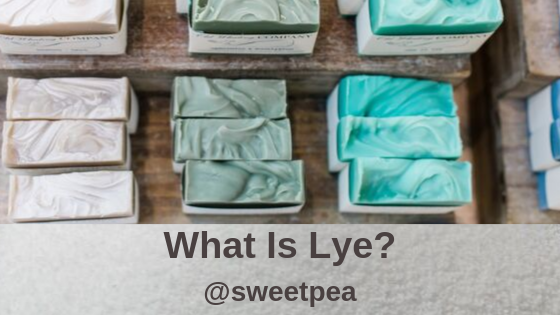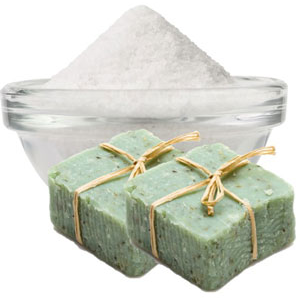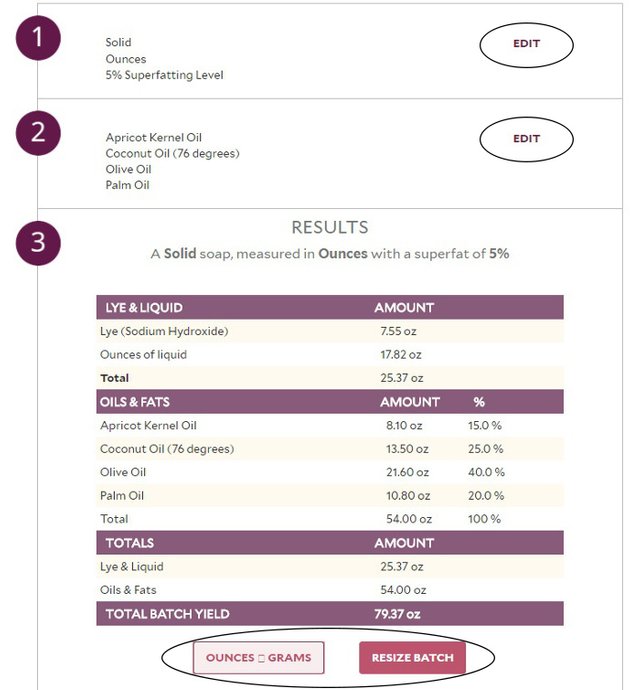03: Learn How To Make Your Own Natural Soap – What Is Lye?
I have set aside some time to compose an entire post on Lye, what it is, how it works, and why you simply cannot make a natural hard bar of soap without it. While this part of the workshop might be slightly tedious with tons of theory, it’s important that you know how to work with this caustic and potentially dangerous product.
I promise, in the articles to come, we’ll have more fun making soap instead of only reading about it.

So, What Exactly Is Lye?
Lye is a very-alkaline product that’s been used for centuries to clean things. Some industries even use it in food products. Lye comes in several forms but essentially, there are two main types:
- Sodium Hydroxide (with the abbreviation NaOH)
- Potassium Hydroxide (with the abbreviation KOH)
Sodium Hydroxide is more commonly used for making bar soap so in this post I will continue to refer to NaOH as the main subject.
Because lye has such high PH levels, it’s very caustic product that can result in chemical burns if it comes into contact with unprotected skin.
* Keep in mind that lye is only harmful when it is in its raw form. Once it has gone through a saponification process, then it will no longer burn or harm skin.
Please refer to this link for a definition on the saponification process.
How Is Lye Formed?
This answer includes a bit if science.
Sodium hydroxide is basically table salt that’s been dissolved in cold water – with the addition of electrodes. That’s how it’s made now anyhow. Way back in the day – believe it or not – lye was made using the ashes of wood and vegetables (but that’s a story for another time).
To beak it down into more scientific steps, sodium hydroxide is made as follows:
- Fill a glass with cold water
- Add non-iodized sodium chloride (salt) to the water and gently mix
- Put two carbon rods into the solution and then apply power
- Apply power for at least 7 hours
- Now you will have to wait a few days for the water to evaporate
During this process, the salt-water mixture was broken up into sodium and chlorine. The crystals that form after evaporation are sodium hydroxide.
Of course, not everyone will get this experiment right at home – the type of power applied and the ingredients need to be quite specific.
The good news is that lye for soap-making can be bought from most chemists and hardware stores (just make sure it is food-grade). Lye sold for cleaning drains can potentially be too harsh for the saponification process to be successful.
Is Lye Natural?
Lye on its own is a chemical. BUT –
The chemical reaction of making soap (referred to as saponification) includes the process where lye and oil molecules combine to chemically change lye and oil into soap and glycerine.
If the soap is made properly, the lye is used up in the saponification process to turn oil into soap.
Once the saponification process is complete, then no lye will remain in the completed product.

How to Safely Work with Lye
Because lye is extremely caustic, it can burn the skin. So, when making soap, we urge you to wear rubber gloves and safety glasses at all time. Just a tiny splatter of lye onto your skin could burn and cause irritation.
What Is A Lye Calculator?
A lye calculator is an essential tool in the soap-making process. In a nutshell, it’s a calculator that helps to determine how much liquid and lye should be added to a soap recipe in conjunction with the types and amounts of oils you are using.
A lye calculator can help to prevent soda ash (where not all of the lye was used up to make soap). Soda Ash can irritate skin and you want to avoid its appearance in your soap at all costs.

I prefer to use the Brambleberry Calculator – found HERE.
Next in the line-up will be –
My next addition will be a little more on the fun side where we will actually start making some soap together!
04: Learn How To Make Your Own Natural Soap – It’s Time To Make Your First Batch Of Soap (With Chocolate Bar Recipe)
Index:
01: Learn How To Make Your Own Natural Soap – Introduction and Terminology
02: Learn How To Make Your Own Natural Soap – Stocking Up On The Essentials
Much love - @sweetpea

⊱✿◕‿◕✿⊰ great content @sweetpea support coming to you from #teamsouthafrica
Thanks @joanstewart - appreciate it :)
Congratulations, your post was discovered and featured by @OCD in its daily compilation #414!
If you give @ocd a follow – you can find other Gems!
Check our website for the whitelist, queue and delegation info. Join our Discord channel to be part of our community
We also have a witness. You can vote for @ocd-witness with SteemConnect or on Steemit Witnesses to help support other undervalued authors!
Thank you!